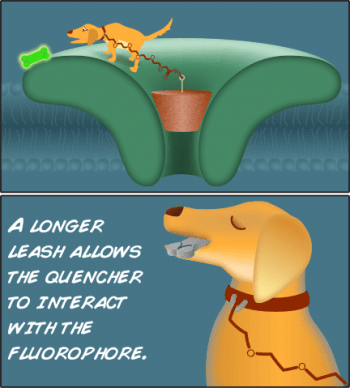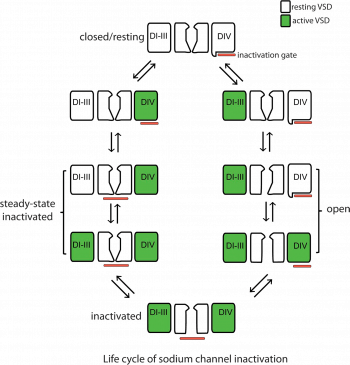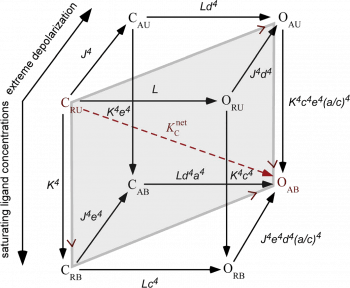Listen to JGP’s podcast; Sounds Physiological.
Author: pyursik
Commentary on tethered spectroscopic blockers by Frank Bosmans

Frank Bosmans wrote a commentary of our article, “Tethered spectroscopic probes estimate dynamic distances with subnanometer resolution in voltage-dependent potassium channels,” where he compared the tether length to a dog leash. Longer tethers allow the dog to quench the fluorophore bone, and shorter ones do not. Bosman’s article is titled, “New rule(r)s for FRET.“
“Systematic Investigation,” commentary from C. Ahern

Christopher A. Ahern summarizes our recent paper as a “voltage sensor–disabling approach to systematically investigate the identity of the molecular trigger for inactivation and confirm the role for the domain four (DIV S4) voltage sensor in this key physiological process.” Read more in Ahern’s commentary article, “What activates inactivation?“
Linkage analysis toolkit by Dan Sigg
An introductory video on Linkage analysis by our collaborator, Dan Sigg. This video abstract accompanied two back to back articles in the Journal of General Physiology on the application of Linkage analysis to probe molecular basis of allosteric interactions. Chowdhury, S. and Chanda, B. (2013) Free-energy relationships in ion channels activated by voltage and ligand.Journal […]
Estimating the free energy change: JGP Video Abstract
The Journal of General Physiology published a video abstract for our lab describing how we estimate the free energy change for ion channels. This video relates to our article: Chowdhury, S., and Chanda, B. (2012) Estimating the voltage-dependent free energy change of ion channels using the median voltage of activation.Journal of General Physiology 139 (1): […]
“Rigorous Thermodynamic Formalisms”

Ofer Yifrach talks about our recent article in his commentary, “No model in mind: A model-free approach for studying ionchannel gating,” in the Journal of General Physiology.
“Elegant Analysis,” commentary on our article.

Christopher Miller puts our recent article in a broader context in his commentary, “Model-free free energy for voltage-gated channels,” in the Journal of General Physiology.